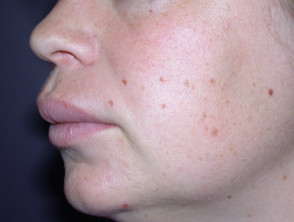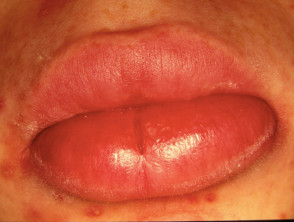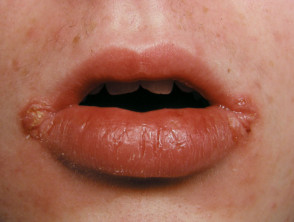What is granulomatous cheilitis?
Granulomatous cheilitis refers to an uncommon condition in which there is lumpy swelling of the lips. It is also known as cheilitis granulomatosa or Miescher cheilitis. It is part of the spectrum of orofacial granulomatosis including Miescher-Melkersson-Rosenthal syndrome (granulomatous cheilitis, facial palsy and fissuring of the tongue).
Who gets granulomatous cheilitis?
Granulomatous cheilitis is rare. It may occur in people of any race, sex and age, although onset is usually in early adulthood.
What is the cause of granulomatous cheilitis?
The causes of granulomatous cheilitis include:
- Allergic contact dermatitis
- Crohn disease
- Sarcoidosis
- Orofacial granulomatosis
- Cancer or infection resulting in obstruction of lymphatics around the lips
- A genetic disorder.
What are the signs and symptoms of granulomatous cheilitis?
Granulomas in Miescher cheilitis are confined to the lip. In other cases of granulomatous cheilitis, granulomatous disease is more widespread.
The first symptom of granulomatous cheilitis is a sudden swelling of the upper lip. In most cases, this first episode goes away within hours or days. Swelling of the lower lip and one or both cheeks may follow in orofacial granulomatosis. Less commonly, the forehead, eyelids, or one side of the scalp may be involved. The swelling may feel soft, firm or nodular when touched.
Recurrent attacks of granulomatous cheilitis may occur within days or even years after the first episode. At each episode, the swelling may become larger, more persistent and eventually become permanent. At this time the lips may crack, bleed and heal leaving a reddish-brown colour with scaling. This can be painful. Eventually, the lip takes on the consistency of hard rubber.
Granulomatous cheilitis
See more images of granulomatous cheilitis
Other symptoms that may accompany granulomatous cheilitis include:
- Fever, headache and visual disturbances
- Mild enlargement of regional lymph nodes in 50% of cases
- Fissured or plicated (pleat-like effect) tongue in 20–40% of cases
- Facial palsy; this can be intermittent, then possibly permanent and can be unilateral or bilateral, and partial or complete. It occurs in about 30% of cases of granulomatous cheilitis and indicates progression to orofacial granulomatosis.
How is the diagnosis of granulomatous cheilitis made?
The diagnosis is often suspected clinically. Skin biopsy of the affected tissue shows characteristic histopathology, in which there are granulomas, i.e. a mixed inflammatory cell infiltration, in the dermis (the deeper layer of the skin).
What treatment is available?
If it is related to an allergy, responsible dietary components or causative substances should be avoided longterm. If there is an underlying disease, systemic treatment for this may also reduce the swelling of the lips.
The following measures have been reported to reduce the severity of granulomatous cheilitis in at least some cases.
- Topical corticosteroids
- Long term anti-inflammatory antibiotics, such as a six to twelve-month course of tetracycline, erythromycin or penicillin
- Intralesional corticosteroids injected into the lips to reduce swelling. Injections need to be repeated every few months.
- Non-steroidal anti-inflammatory agents
- Mast cell stabilisers such as ketotifen
- Clofazimine
- Sulfasalazine
- Surgical reduction


